The Best Summer Books Of 2023, According To Two Science Writers
34:25 minutes
Summer is one of the best times to crack open a book and read the hours away, according to Jaime Green and Annalee Newitz. The two science writers are voracious readers, and they’ve compiled a list of their summer reading recommendations for Science Friday listeners. Green and Newitz join Ira from New Britain, Connecticut and San Francisco, California respectively, to discuss their favorite nonfiction and fiction books for the summer, and take questions from listeners.
Disclaimer: When you purchase products through the Bookshop.org links on this page, Science Friday may earn a small commission which helps support our journalism.
Author of The Terraformers
“In The Possibility of Life, Jaime Green traces the history of our understanding, from the days of Galileo and Copernicus to our contemporary quest for exoplanets … [it] explores our evolving conception of the cosmos to ask an even deeper question: What does it mean to be human?”
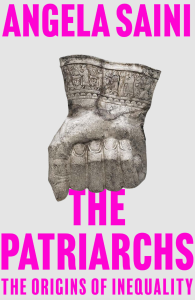
“In this bold and radical book, Angela Saini explores the roots of what we call patriarchy, uncovering a complex history of how it first became embedded in societies and spread across the globe from prehistory into the present. She travels to the world’s earliest known human settlements, analyzes the latest research findings in science and archaeology, and traces cultural and political histories from the Americas to Asia.”
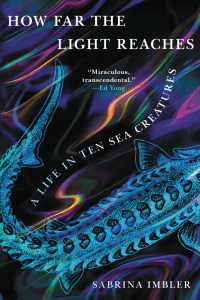
“A queer, mixed race writer working in a largely white, male field, Sabrina Imbler has always been drawn to the mystery of life in the sea, and particularly to creatures living in hostile or remote environments … Exploring themes of adaptation, survival, sexuality, and care, and weaving the wonders of marine biology with stories of their own family, relationships, and coming of age, How Far the Light Reaches is a shimmering, otherworldly debut that attunes us to new visions of our world and its miracles.”
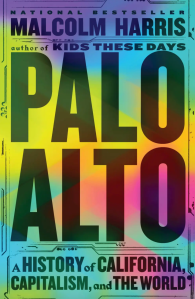
“Malcolm Harris examines how and why Northern California evolved in the particular, consequential way it did, tracing the ideologies, technologies, and policies that have been engineered there over the course of 150 years of Anglo settler colonialism, from IQ tests to the ‘tragedy of the commons,’ racial genetics, and ‘broken windows’ theory … [It] is an urgent and visionary history of the way we live now, one that ends with a clear-eyed, radical proposition for how we might begin to change course.”
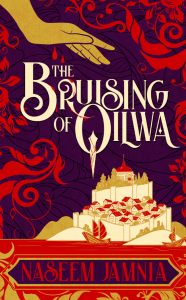
“In this intricate debut fantasy introducing a queernormative Persian-inspired world, a nonbinary refugee practitioner of blood magic discovers a strange disease that causes political rifts in their new homeland. Persian-American author Naseem Jamnia has crafted a gripping narrative with a moving, nuanced exploration of immigration, gender, healing, and family.”
Invest in quality science journalism by making a donation to Science Friday.
Author of The Possibility of Life: Science Imagination, and Our Quest for Kinship in the Cosmos
“Jonathan Losos, writing as both a scientist and a cat lover, explores how researchers today are unraveling the secrets of the cat, past and present, using all the tools of modern technology, from GPS tracking and genomics to forensic archaeology. In addition to solving the mysteries of your cat’s past, it gives us a cat’s-eye view of today’s habitats, including meeting wild cousins around the world whose habits your sweet house cat sometimes eerily parallels.”
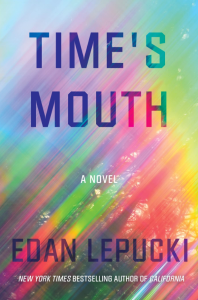
“Ursa possesses a very special gift. She can travel through memory and revisit her past. After she flees her hometown for the counterculture glory of 1950’s California, the intoxicating potential of her unique ability eventually draws a group of women into her orbit … From the forests of Santa Cruz, to the 1980s glam of Melrose Avenue to a solitary mansion among the oil derricks off La Cienega Boulevard, Time’s Mouth is a poignant and evocative excavation of the bonds that bind families together.”

“In this illuminating narrative, journalist Virginia Sole-Smith exposes the daily onslaught of fatphobia and body shaming that kids face from school, sports, doctors, diet culture, and parents themselves–and offers strategies for how families can change the conversation around weight, health, and self-worth.”
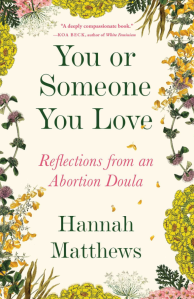
“Hannah Matthews breathes depth and nuance into the oversimplified narratives surrounding abortion, presenting an accessible guide to the emotional and physical realities of providing and supporting abortion care for our own communities. Featuring stories of real abortion experiences, including Matthews’s own, You or Someone You Love offers a glimpse into the stunningly diverse landscape of abortion care across gender, race, and class lines, while illustrating how we can better support and protect the people who seek abortion in a country that increasingly promotes secrecy and shame.”
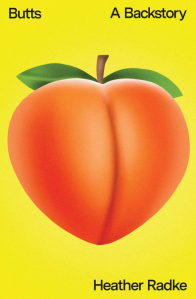
“Whether we love them or hate them, think they’re sexy, think they’re strange, consider them too big, too small, or anywhere in between, humans have a complicated relationship with butts … A woman’s butt, in particular, is forever being assessed, criticized, and objectified, from anxious self-examinations trying on jeans in department store dressing rooms to enduring crass remarks while walking down a street or high school hallways. But why? In Butts: A Backstory, Heather Radke is determined to find out.”
Annalee Newitz is a science journalist and author based in San Francisco, California. They are author of Stories Are Weapons: Psychological Warfare and the American Mind, Four Lost Cities: A Secret History of the Urban Age andThe Future of Another Timeline, and co-host of the podcast Our Opinions Are Correct.
Jaime Green is a science writer and author of The Possibility of Life: Science, Imagination, and Our Quest for Kinship in the Cosmos. She’s based in Connecticut.
IRA FLATOW: This is Science Friday. I’m Ira Flatow, and now it’s time for our annual summer science book list because we can all use a good book to read over this summer, can’t we, whether that’s in a hammock or on the beach or just lounging back on the couch. And our panel of book nerds is assembled with their recommendations. Let me introduce them.
Jaime Green, science writer, author of The Possibility of Life. Jaime is based in New Britain, Connecticut. Annalee Newitz, science writer and author of The Terraformers, based in San Francisco, California. Welcome back both of you to Science Friday.
ANNALEE NEWITZ: Thanks for having me.
JAIME GREEN: Thank you. Hello.
IRA FLATOW: Nice to see you guys. We’re taking calls, too. Let us know what kind of books you’re craving this summer. Our guests and help you out with suggestions, but you make the call– only if you make the call. Our number 844-724-8255, 844-SCI-TALK, and, of course, you can tweet us SciFri. Let’s get right into this.
It’s always interesting to have recommendations, and, Annalee, I’m going to put you on the spot first right off the bat. I want to get to one of your picks which should be very familiar to Jaime because it’s Jaime’s book, The Possibility of Life. Tell us about this book.
ANNALEE NEWITZ: Yeah. No pressure since Jaime’s right here listening. So this is a book that I just really enjoyed because it answers a question about why it is that both scientists and fiction writers are obsessed with imagining life beyond Earth. And part of the book deals with the history of how we’ve imagined life beyond Earth, but the part where it gets really good is where Jaime thinks about how it is that humans are constantly looking for an outside perspective on ourselves. It’s really hard to be the only species on Earth that talks about ourselves all the time and writes a lot of books about ourselves, and part of the yearning to imagine creatures beyond Earth is to just get ourselves into a perspective of seeing humanity from the outside.
IRA FLATOW: Yeah. Because we’re always looking that way. Science fiction writers have been writing about this for ages.
ANNALEE NEWITZ: Yeah, that’s right. And one of the other things that I thought was incredible about this book is that Jaime does a great job of weaving together contributions from the humanities and the sciences and showing that these two disciplines when they tackle the question of life beyond Earth are not rivals with each other. They’re actually working together to help humans imagine who we are and who we could be. It’s really great if you are looking for an escapist read. Also if you’re looking for great recommendations for more science fiction in this book, you’re going to come away with a lot of great ideas because Jaime has fantastic taste in science fiction. So this is a book that will lead you to other books.
IRA FLATOW: Jaime, it would be impolite of me not to ask you to comment on. When we talk about somebody, they should have the right to rebuttal.
JAIME GREEN: What is there to say other than thank you? I just really appreciate that.
[LAUGHTER]
IRA FLATOW: That’s it. And, Annalee, there’s another book on your list that we talked about on this show a little while back, and that was How Far the Light Reaches by Sabrina Imbler. Tell me about this one, why this caught your attention.
ANNALEE NEWITZ: Yeah, this is a book like you said that’s been getting a lot of attention. It just won the LA Times Book Prize in science, and this is a great beach read because it’s literally about getting to know creatures in the ocean. And as the title suggests, it’s about 10 different sea creatures, and Imbler picks ones that you might not expect. I think we all know about charismatic megafauna in the ocean– the beautiful whales, the mysterious and amazing octopuses– but Imbler focuses on giant blobs of slime, little limpets, which are just tiny shells that are attached to rocks– creatures in shells attached to rocks, crabs that have goofy fur all over them, Yeti crabs. And it’s a book that really takes science journalism in a new direction, which is Imbler brings in aspects of their own life, stories about their relationship with their mother, relationship with their own sexual identity and racial identity, and uses that as a way to think about how humans can start to empathize with these creatures who are so different from us and live in places that are radically different from where we live on land.
And so reading this book, you’re not just going to learn cool facts about slime in the ocean, but you’re also going to learn a way of relating to those creatures. And I think that’s just so important right now as we think about our relationship with the environment, not just learning about it as something out there but something that connected.
IRA FLATOW: It’s a different perspective we don’t usually get as you say when talking about slimy creatures in the ocean.
ANNALEE NEWITZ: Yeah. And I love slimy creatures, so I just can’t get enough of this story.
IRA FLATOW: What’s not to love?
ANNALEE NEWITZ: Yeah so definitely check that one out.
IRA FLATOW: Jaime, your next pick takes us to the animal kingdom to one creature that many of us are very familiar with, and that is the house cat. And, boy, we have cat lovers on our staff, Science Friday.
JAIME GREEN: Wow.
IRA FLATOW: They take up all the Zoom meetings when we’re there. Tell us about this book, Jaime.
JAIME GREEN: Yeah. So this book is The Cat’s Meow by Jonathan Losos, and Losos is an evolutionary biologist. His previous book is actually one that was really helpful to me in my research for my book. It was called Improbable Destinies about convergent evolution, but The Cat’s Meow focuses on the evolutionary history of the house cat, the domestic cat. I think dogs and their ancestry with wolves get so much of our cultural attention partly because we’re really familiar with wolves as just an animal that we know about whereas the wild ancestors of domestic cats aren’t as familiar to us. Cats didn’t evolve from lions and tigers. There are these other small wild cats.
And Losos is just a fantastic writer and such a expert on evolutionary biology. I just love his writing so much, and there’s just– it’s so interesting. Cats are so mysterious as creatures and in their role in culture, so it’s just so great to see what’s going on behind the curtain.
IRA FLATOW: 844-724-8255 is our number. That’s what’s going on behind the curtain here, and let’s go to the phones because while we’re in the animal mood to talk about animals, let’s go to Marin County. Welcome to Science Friday. Hi, there.
Oh, well. The topic was what the owl knows. I can’t make out the name here, so I can’t say who it is but somebody’s Marin– what the owl– OK, sorry. Because we talked about this, owls and how interesting they are and how they’re those kind of cute furry little– furry looking things with the feathers and stuff. But they’re incredible killers. That’s what they do for a living, right?
JAIME GREEN: Yeah.
IRA FLATOW: So– so, Annalee, you’ve got a recommendation here that seems really interesting. It’s a history of Silicon Valley and why it developed into such a massive tech hub. Tell me about this because I actually– I’m old enough to remember when all this happened.
JAIME GREEN: Well, not quite all of this because this book does go back a couple of hundred years, so this is called– [LAUGHING]– so this is called Palo Alto– A History of California, Capitalism, and the World. And it’s by a journalist named Malcolm Harris, and he set out to answer a really simple question, which is why is it that this slogan that came from Silicon Valley companies– which is the slogan move fast and break things, usually attributed to Facebook– how did that come to be? How did it come to be that we think that that’s a normal way to conduct business?
And what resulted is this epic journey. It’s 700 pages of history. It’s the perfect beach read for people who are experiencing burnout in their jobs and want to understand how we got to this place where we associate both technological innovation and the proper functioning of capitalism with just completely grinding workers into a pulp and asking them to do far more labor than is actually feasible.
And so Harris goes all the way back to the settlement of California, with the arrival of white settlers who are displacing and destroying and murdering Indigenous groups. And he goes all the way up to the present day and takes us into all these different byways of history– like the origins of Stanford University in Palo Alto, which is one of the incubators of Silicon Valley technology companies, and how the framers of Stanford were fascinated by eugenics and by the idea that certain kinds of people were better than others based on race. There’s even a mysterious murder that takes place and the founding of Stanford.
And he brings in stories of immigration to California and ties it all together. It’s just all these incredible details about California history, technology development history, economic history, and we finally get to the present where we’re living in a world where technology workers are finally going on strike because their labor conditions are so bad. And this is really a story about how that came to be, all the complicated nuanced weirdness that led us here. So, again, if you’re feeling burnout or if you just love great histories of technology, this has to be on your list.
IRA FLATOW: The name of the book again is.
JAIME GREEN: Palo Alto– A History of California, Capitalism, and the World.
IRA FLATOW: I can see the movie being shaped. Let’s–
[LAUGHTER]
Let’s go to– let’s go to Eon in Iowa City, Iowa. Welcome to Science Friday.
AUDIENCE: Hi. This is Matt Berkey in Iowa City, Iowa.
IRA FLATOW: Hi, there. Go for it.
AUDIENCE: Hi. The book I’m reading this summer, it just came out. It’s called The Swine Republic by Chris Jones, recently retired from the hydrow department at the University of Iowa. It discusses the– though Iowa’s number one in farming, especially for pork, it’s been affecting our waterways, and does the science we’re seeing in the water match up with what we’re hearing from the state government and big agriculture because everyone needs to eat. We need to increase farmland productivity, but the way we’re treating our water affects not only Iowans drinking the water but also those downstream and the Mississippi River and the Gulf of Mexico
IRA FLATOW: Yeah, especially the swine industry, which–
AUDIENCE: Yes. We’re number one in pork, which is great for us and others nearby, but it’s having an effect. There’s a lot of Iowans that get their water source from rivers that are polluted by nitrates and swine runoff.
IRA FLATOW: Yeah. Tremendous problem in lots of parts of the country. You like the book. What was the name of the book again?
AUDIENCE: The book is The Swine Republic by Chris Jones. It’s great because it’s a very fair look at what the state government and what big agriculture is telling us and what we’re seeing from the numbers of the hydrology and water science.
IRA FLATOW: Well, thanks for calling in. Jaime, Annalee, very timely book.
JAIME GREEN: Yeah.
ANNALEE NEWITZ: Yeah, that sounds great. I’m really interested in that. Wastewater runoff is one of our biggest problems in our estuaries and coastal areas, so this sounds perfect.
IRA FLATOW: Let’s see if we can get to a quick– another call. Let’s– well, let me ask you, Jaime, you’ve got a parenting book on your list, which we don’t always think about when we think about science books. I’m going to ask you to tell me about it after I tell everybody this is Science Friday from WNYC Studios.
JAIME GREEN: So now? OK.
IRA FLATOW: Go. Go!
[LAUGHTER]
JAIME GREEN: The book is Fat Talk by Virginia Sole-Smith. And I think it’s a parenting book, but I really think it’s a book that everyone can benefit from reading. The subtitle is Parenting in the Age of Diet Culture, and building off of what you were talking about on the show before this segment with moving away from the BMI, this book looks at how fatphobia harms children and really harms everyone and how the science and the medical understanding we think we have of what being fat means for our bodies and the way that that translates into the way that fat people are treated and the way that parents treat their children, there’s a lot that we need to reconsider. And it’s just so fantastic in terms of the science, the medicine, the ethics, the psychology, and just thinking about what do we want for our children and for other people in the world.
IRA FLATOW: And what made you pick this book?
JAIME GREEN: The fact that I think it’s important, the fact that I think– I have a four-year-old child, and when I think about raising him, I want him to think that his body is fine and to not grow up thinking that there’s something wrong with him depending on what size he is. And I think that it’s very important that we keep working to separate our understanding of weight and body size from our understanding of health and– kids who are such young children are thinking that being fat is bad. Kids are starting to diet and develop eating disorders. Being put on a diet is the number one predictor of developing an eating disorder for a kid, and I think children and everyone just deserves a lot better.
IRA FLATOW: Parent– the name of the book again because people may not remember.
JAIME GREEN: The name of the book is Fat Talk by Virginia Sole-Smith.
IRA FLATOW: Fat Talk. Let’s go– let’s go to the phones. Let’s go to Duncan in Miami. Hi, Duncan. Welcome to Science Friday.
AUDIENCE: Yeah, hi. My recommendation is a six-book series, and it’s a– actually they’re formally they are mystery thrillers, but they have a deep scientific background in both. It’s Ben Candidi, Rebecca Levis series. The names of the books are Pharmacology Is Murder, Biotechnology Is Murder, Medical School Is Murder, Amazon Gold, Bahamas West End Is Murder, and Yucatan Is Murder. And the protagonist, Ben Candidi, he starts out as a graduate student and ends up as a freelance scientist at the end of the series, and Rebecca Levis starts out as a medical student that Ben met while they were at the same institution. And she ends up as a world health expert.
IRA FLATOW: So this is a fictional series, or is it real people?
AUDIENCE: Fiction.
IRA FLATOW: Fiction. And you liked it because you learned or you found most interesting about it.
AUDIENCE: Well in terms of full disclosure, I wrote it. But– but I guess that’s not unprecedented on this show. Dirk– my name is Duncan Haynes. I’m a biomedical scientist of about 50 years.
IRA FLATOW: Wow.
AUDIENCE: In the– it was taken from my own experiences most of this, but I cast it in a mystery thriller framework.
IRA FLATOW: And is it– is it available everywhere for people to get it?
AUDIENCE: Yes it is. It’s had a really good run. It’s been over 20 years, and it’s still selling.
IRA FLATOW: Wow. Wow.
AUDIENCE: And the– Amazon is the best place to get it.
IRA FLATOW: All right. I can’t let you sell– I can’t let you sell your book here, but, yeah, I think you’ve given everybody a good lesson about what it is. Maybe we should, Annalee, should have authors coming on pitching their books.
JAIME GREEN: That’s what I’ve ended up doing here, right. Thank you, Annalee.
ANNALEE NEWITZ: It was– yeah, I was selling it for you, and you were just agreeing.
IRA FLATOW: What a novel idea. Have a radio show where you have authors who write books and come on and pitch their books. Wow. Think it’ll– I don’t think it’s going to work. Well, we’re going to have to take a break and reset a little bit about bringing more authors back.
Well, we’re talking about our annual book show, our summer reading list. Our number 844-724-8255, 844-SCI-TALK. You can also tweet us SciFri. We’d like to take your tweets. We don’t have very many of them so get on there and send us some tweets.
We’re speaking with Annalee Newitz and Jaime Green. Jaime is a science writer and author of The Possibility of Life. Annalee Newitz is a science writer and author of The Terraformers. There you go, two book authors pitching their books. We’ll be right back– we love it– after the break. Stay with us.
This is Science Friday. I’m Ira Flatow. This hour, we’re talking about some of the best science books for summer and just a note that the SciFri Book Club is preparing to sink into the soil with our first official pick for the summer. So please join us as we read Entangled Life– How Fungi Make Our Worlds, Change Our Minds, Shape Our Futures by Merlin Sheldrake.
You can find out more including how to win a free book– don’t we all want to do that, yes– on our website sciencefriday.com/BookClub. That’s sciencefriday.com/BookClub. We’re reading our summer book club reading.
And now we’re continuing our conversation about the best science books to read this summer with my guests Jaime Green, science writer, author of The Possibility of Life, Annalee Newitz, science writer author of The Terraformers. And we’re taking your calls. Well, let us know what kind of books you’re craving this summer and our guests and help you out with suggestions. Our number 844-724-8255. You can also tweet us at SciFri. So many calls.
Here’s a tweet from Orla in Naperville. Not a new book but going to read Isaac Asimov’s Foundation series. Read as a teen 30 years ago, specifically remember a character having a smartphone type device, wondering how it relates to the world today. That’s really interest– wow, it’s been that long. And now there’s now the TV or the video version of it, right?
JAIME GREEN: Yep, there’s now a TV series based on Foundation which takes some of the ideas from the book and makes them a little bit better for the modern era.
IRA FLATOW: And Asimov was so far ahead in some of his predictions about what the world would look like about robotics, created to those laws of robotics, right. So let’s go to San Antonio. Looking– hi. Welcome to Science Friday.
AUDIENCE: Hi, my name is Katherine. How are you?
IRA FLATOW: Hi. How are you? Go ahead.
AUDIENCE: I’m great. I have a precocious and very intelligent 10-year-old who is into physics, and we are looking for book recommendations for him. He’s read all this Randall Monroe’s What If and How To books, and he really think physics is hilarious. And we’re here looking for more books that he might be interested in, which is a tall ask.
IRA FLATOW: Good question. Annalee, Jaime, any physics recommendations for kids?
Tough one.
JAIME GREEN: Gosh, stumped. I am stumped for–
IRA FLATOW: I’ll give you one of mine that I read when I was 12.
AUDIENCE: Great.
IRA FLATOW: And still– and it’s George Gamow. George Gamow was a big time physicist, and he wrote a whole series of Mr. Tompkins in Relativity Land. And the book is– books are still out there. It’s been a while. It’s 50, 60 years old, but it says in readable form how the world will look to you if you lived in a world that was close to the speed of light. Everything was moving, so that’s one–
AUDIENCE: Ooh, interesting. He would find that very interesting.
IRA FLATOW: Yeah–
AUDIENCE: He just thinks physics is hilarious. I think Randall Munroe has had a very large impact on him.
JAIME GREEN: I would say also if you like science books that are funny–
AUDIENCE: Yeah.
JAIME GREEN: This is not physics but Janelle Shane recently wrote a book called you Look Like a Thing and I Love You, and it’s all about AI. In fact, the title was written by AI, and it explains all of the new developments in AI but from a really funny perspective. So if you want to jump from physics into AI, highly recommend You Look Like a Thing and I Love You.
AUDIENCE: You Look Like a Thing and You Love Me, got it. All righty.
IRA FLATOW: Well, thanks for– good luck to you.
AUDIENCE: Well, I appreciate it.
IRA FLATOW: You’re welcome.
AUDIENCE: Thanks. Have a good one. Bye bye.
IRA FLATOW: Annalee, let’s go to one of your picks for the social science fans out there. The Patriarchs, tell me about that.
ANNALEE NEWITZ: Yeah. This is a new book by the journal– the science journalist Angela Saini. It’s called The Patriarchs– The Origins of Inequality, and it’s a really interesting look at I would say anthropology and history around how it came to be that men were in power and women were not all over the world. And Saini is really terrific at writing about the social impact of science. Her previous book Superior was about scientific racism.
And so here she’s tackling the myth that the reason why men are in charge is basically that they’re stronger. And she’s exploring how actually there’s nothing natural or biologically determined about patriarchy. And I’ll give you an example of one of the anecdotes in the book that really blew my mind, which is that she said again and again as she’s doing her research she’s encountering people saying, well, obviously it’s natural for men to be in charge because they’re stronger, which, of course, again, biologically is not realistic. There’s so much variation in strength and size within each sex as well as across sex, so that can’t be the reason.
And so what she finds is that actually the practice of exogeny is at the root of a lot of social ills around patriarchy, and exogeny is an anthropological term for the practice of taking women out of their families and sending them to live with their husbands’ families. It’s very typical in cultures all across the world, and she points out that what this does is it removes women from their social support networks. It takes them away from their families, their friends, everyone they’re familiar with, and sends them to live with strangers sometimes quite far away from their family of origin.
And she says that this practice more than anything has disempowered women because when they get into conflicts in their new home, they have no one to back them up. If they get into trouble, if they have problems, they have no emotional support. And so they’re put into these subordinate positions with no structure to help them get out. And so that’s just one of many examples of how she kind of overturns our myths and expectations about why patriarchy came to be, why patriarchy is actually something imposed from the outside on women by politics or by social practices rather than by biology. It’s a great book. It’s just called The Patriarchs.
IRA FLATOW: It’s very interesting. I just got a tweet from someone who recommended– James in Des Moines– a book I read in the mid 70s called The Descent of Woman. Elaine Morgan wrote this book about looking at evolution from a female point of view. This is very much I recall during the feminist movement of the late ’60s and early ’70s. And she said that if you look at– it started out– it started the aquatic ape theme where the idea–
ANNALEE NEWITZ: Yeah.
IRA FLATOW: You know that one?
ANNALEE NEWITZ: Sorry. I am familiar with the aquatic ape, yes.
IRA FLATOW: And she– and she– she wrote in the book if you look at mammals that live in the ocean, you see that they’re very similar to people and they do things that apes don’t do. So if–
ANNALEE NEWITZ: Yeah.
IRA FLATOW: It’s– and I remember because I love the idea– I know it’s unproven and every time I talk to an anthropologist or an archaeologist and I bring it up, they say it’s an interesting idea but we have no evidence. If an ape goes to live in the water and develops the stuff you have in the water, there are no bones around. There’s no evidence, no fossil record of itself. While it might be an interesting idea, it’s not scientifically valid yet. But it is–
ANNALEE NEWITZ: It’s more of a myth about our origins that we evolved on land then went into the ocean and evolved a little while in the ocean then came back to the land with everything we’d learned from the ocean. So it’s a cool story but not sure if it’s true. Let’s say we don’t– we– not true until proven otherwise.
IRA FLATOW: There you go.
ANNALEE NEWITZ: Yeah.
IRA FLATOW: Well, that’s just like aliens. Now let’s go to Peggy in Sebastopol, California. Hi, Peggy.
AUDIENCE: Hi, there.
IRA FLATOW: Hi, there.
AUDIENCE: OK. Yeah, so the book I’d like to recommend is a little old. It was from 2016 . It’s called Are We Smart Enough to Know How Smart Animals Are, and it’s by the primatologist Frans de Waal, who I think became famous for his book Mama’s Last Hug about Bonobos. But he’s a wonderful writer. I love his writing, and in this book, he is talking about– he’s not just talking about primates. He’s– of course, a lot about that but also other animal species and critiquing the way that scientists have studied animal intelligence as very biased and that there’s been a shift to really study them on their own terms. And in the process of this book, he– one remarkable story after another about the abilities of animals– the cognitive abilities of animals, a marvelous read.
IRA FLATOW: OK. Thanks for that recommendation. Frans de Waal has been a constant guest every time a new book comes out. He’s a very interesting guy, and it sounds like an interesting read. Jaime, what do you think?
JAIME GREEN: Yeah, no, I think that sounds fantastic.
IRA FLATOW: Yeah. One of your recommendations is about a SciFri favorite topic, the rear end.
JAIME GREEN: Yes! It is– and it’s so concisely titled. It’s called Butts– A Backstory. And it’s– I love this book. I actually just finished it. It just came out in paperback. And it is a scientific and cultural history of butts, homing in on women’s butts, especially in European and American culture but going all the way back to the evolution of the butt, why we have butts, looking at why butts are attractive, what may or may not be evolutionary reasons for that, and then just dropping all into these important moments in cultural history for how butts hold a lot of meaning in our culture.
It’s fascinating. It’s so smart. There’s so much research brought together, and it’s also just an absolutely delightful book.
IRA FLATOW: That really is– sounds interesting.
ANNALEE NEWITZ: I feel like we’ve really gotten to the bottom of this question now.
IRA FLATOW: Ooh, oh, thank you. Where’s my– where’s my rim shot when I need it?
Annalee, there’s a TV show I’ve been watching recently based on the science fiction series. The show is called Silo. It’s on Apple TV Plus, and I love the book series. Hugh Howey literally gave it away years ago on Amazon. Do you like– have you seen it? Do you– have you read the book? Do you like the video series as much as I do.
ANNALEE NEWITZ: Yeah, I just– I’m so glad to hear that you’re enjoying it. It’s apparently one of the most popular shows that they’ve had on Apple, and so they’ve already renewed it for another season. So you’re in luck. I just started watching it. Yeah, and I– it’s got a very dark, dystopian vibe, and it has a little bit of a– a bit of a Twilight Zone feeling. There’s a twist that’s coming and so be on the lookout for that if you’re interested in twisty stories.
I’m going to offer you another recommendation of a TV series based on a book that I think is really interesting, which is Shadow and Bone. There’s two seasons now on Netflix, and this is based on a series by Leigh Bardugo, and it’s fantasy but it’s about climate change and in a very sneaky way. And so if you’re interested in stories about how a massive magical event can cause climate refugees and geopolitical instability, check it out.
It’s a beautifully done show. The acting is incredible. The costumes are great. It’s set in a late 19th century world where everyone is struggling with this horrible magic climate destruction. So definitely check that one out.
IRA FLATOW: This is Science Friday from WNYC Studios.
I will check that out. I want to also bring in an older book that I loved. It was– and one of my favorite authors, David Grann who wrote the– he was on this show for The Lost City of Z, which was fantastic. But I bring it up because I cannot ignore his masterpiece about the systemic killing of members of the Osage Indian Nation in Killers of the Flower Moon. And that is– there are books that you read you have to talk about, and that’s one of those.
And not to mention his new book, which I’m thoroughly enjoying called The Wager– A Tale of Shipwreck, Mutiny, and Murder. And he is such a great– has such a great talent to spin a mystery out of incredible research that he does, digging through stuff. So I just want to if you were familiar with, Jaime or Annalee, with his work.
JAIME GREEN: No, I haven’t gotten to read any of his work yet, but I’ve heard nothing but great things.
IRA FLATOW: Yeah.
ANNALEE NEWITZ: Yeah, same. I’m really excited to check it out.
IRA FLATOW: All right. We have about time maybe enough time for one more recommendation from each of you. Jaime, what–
JAIME GREEN: I have to recommend You or Someone You Love by Hannah Matthews. Hannah is an abortion clinic worker and abortion doula. And so this book is about abortion, but it is also about so much more about networks of care and community and what we can do to help other people. It changes a lot about how I see abortion, and it’s also beautifully written and really funny. And I’m just– I’m obsessed with this book, and I want everyone to read it.
IRA FLATOW: What was the name of the book again?
JAIME GREEN: It’s called You or Someone You Love.
IRA FLATOW: And Jaime. I mean Annalee, do you have a– God, I just asked you that– have you got a recommendation?
[INTERPOSING VOICES]
ANNALEE NEWITZ: But go ahead.
JAIME GREEN: Yeah.
ANNALEE NEWITZ: So I’m going to recommend one more work of fiction because we delved into fiction a little bit here, and this is a book called The Bruising of Qilwa by Nassim Jamnia. Jamnia has a background in biology and medicine and has written a fantasy story where the medical procedures feel more realistic than a lot of nonfiction that I’ve read.
IRA FLATOW: Wow.
JAIME GREEN: And it’s about a immigrant to the city of Qilwa named Ferus, and Ferus is a doctor who’s working at a free clinic in this fantasy city and is dealing with an epidemic that’s breaking out. And so this is a book that is an incredible adventure. It’s about Ferus trying to protect their family of refugees but also to solve a medical mystery. How is this epidemic getting out? What’s causing it? How is it connected to the magical system of the city?
But most of all this is a book about public health. It’s about how the city of Qilwa is shutting down free clinics for the poor in the city. And so Jamnia just brings this really great sense of what matters when it comes to medicine, which is not just a magical cure but also having access to health care. And it’s just a fun, delightful read. It’s called The Bruising of Qilwa.
IRA FLATOW: Well, we’ll have to end it there. I want to thank both of you for taking time to be with us today. Jaime Green, author of The Possibility of Life and Annalee Newitz, author of The Terraformers. Thanks again for being with us today.
ANNALEE NEWITZ: Yeah, thank so much.
JAIME GREEN: Thank you.
IRA FLATOW: And before we end this hour that’s been all about great books, how about recognizing the life of one of America’s greatest authors who left us this week, Cormac McCarthy. Now you’d be forgiven for not associating the author of All the Pretty Horses and No Country for Old Men with science, but back in 2011, he talked with me on this show about how science has impacted his writing.
CORMAC MCCARTHY: I think it kind of helps you to stay honest. You’re talking about things which are factual and things about which there is agreement. It’s kind of hard to get agreement about the arts, but if you’re talking about a theory in physics, guess what, it’s either true or it’s not. And I like that.
IRA FLATOW: Cormac McCarthy speaking on Science Friday in 2011. He died at his home in New Mexico this week. He was 89.
Copyright © 2023 Science Friday Initiative. All rights reserved. Science Friday transcripts are produced on a tight deadline by 3Play Media. Fidelity to the original aired/published audio or video file might vary, and text might be updated or amended in the future. For the authoritative record of Science Friday’s programming, please visit the original aired/published recording. For terms of use and more information, visit our policies pages at http://www.sciencefriday.com/about/policies/
Kathleen Davis is a producer and fill-in host at Science Friday, which means she spends her weeks researching, writing, editing, and sometimes talking into a microphone. She’s always eager to talk about freshwater lakes and Coney Island diners.